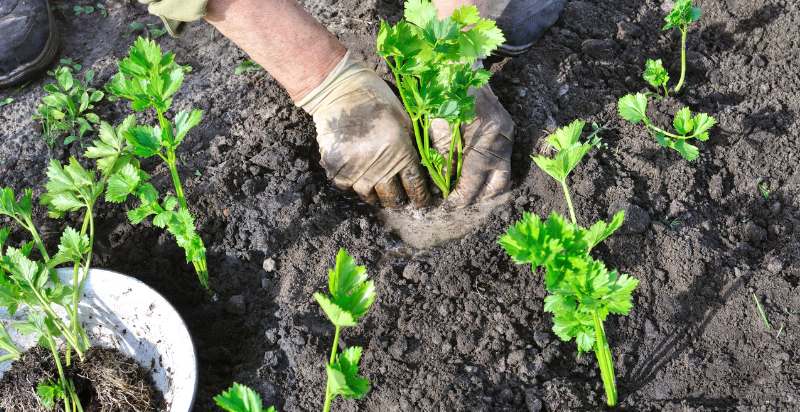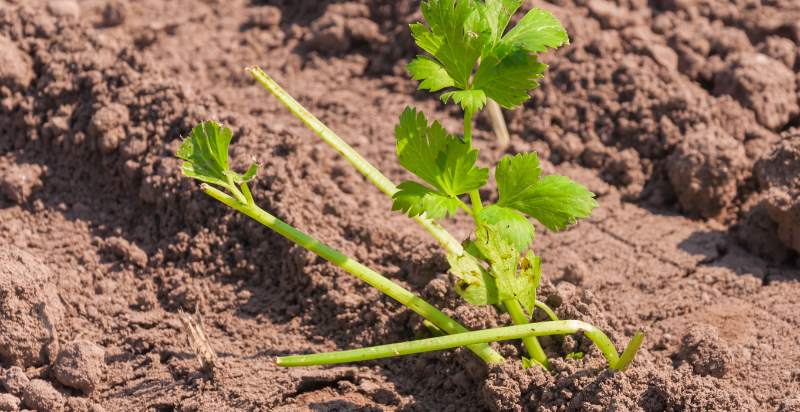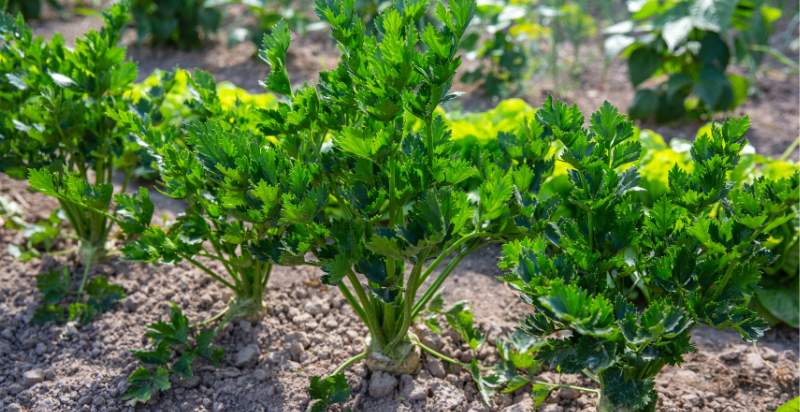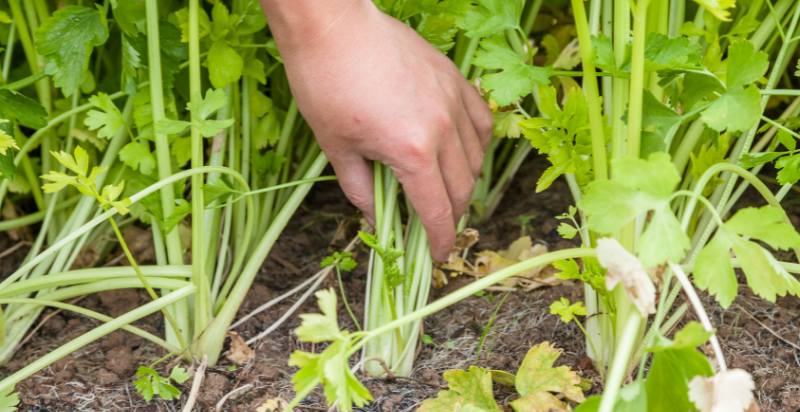Celery is a popular vegetable and herb that has existed since ancient times. It is an edible plant that is part of the Apiaceae family, which includes parsley plant, carrots plant, and fennel plant. Celery has long been used in cooking as a seasoning or garnish, but it can also be enjoyed raw in salads or as a snack. In addition to its culinary uses, celery has been used in traditional medicine and natural health remedies for centuries. Here is everything you wanted to know about.
What is Celery?
Celery is a vegetable that comes from the Apiaceae family. It has long, thin stalk and glossy leaves. The edible parts of the plant include both its stalks and leaves. Celery is most commonly known for its crunchy texture when eaten raw and its mild flavor when cooked. The plant can be used in soups, salads, and stir-fries. Celery is also commonly used to flavor stocks, stews, and sauces.
History and Origin of Celery:
The origins of celery are believed to date back to the ancient Greeks and Romans. Celery was used in both cooking and medicine during these times. In the Middle Ages, celery was cultivated for its medicinal properties and became an important ingredient in herbal remedies. During this period, the plant was also grown for culinary purposes. In the 19th century, celery was first cultivated in the United States. Celery is widely available worldwide and an important part of many cuisines.
Types of Celery:
Celery comes in various types, from the common stalk celery to leaf celery and celeriac. Stalk celery is what is most commonly found in stores and supermarkets. It has long green stalks with leaves at the top. Leaf celery is less common and has flat, glossy leaves with no stalks and a stronger flavor. Celeriac is a root vegetable that has an edible stem, leaves, and roots.
Nutritional Benefits of Eating Celery:
Celery is a good source of vitamins A, C, and K and fiber. It also contains potassium, folate, and magnesium. Celery has been touted for its potential health benefits, such as helping to lower cholesterol levels, aiding digestion, and promoting healthy skin.
How to Plant Celery?
Celery is an easy-to-grow, versatile vegetable with vitamin A and other essential nutrients. It’s perfect for adding a crunchy texture and fresh flavor to salads, soups, stews, and more. And if you want to enjoy the freshest celery possible, consider planting your own! Growing celery from seed may take longer than other vegetables, but it’s worth waiting.
Before Planting
If you’re growing your celery outdoors in the ground or a raised bed, choose a spot that gets full sun for at least 6 hours each day – this will help ensure that your plants get enough light. The soil should be well-draining and fertile, so work in compost or other organic matter before planting.
When to Plant
Celery is a cool-season crop that does best when temperatures are between 60 and 70°F (15–21°C). In most regions of the country, you should wait until early spring to plant, at least 4–6 weeks before your average last frost date. However, if you’d like to get an early start on the growing season, consider growing celery plant indoors in pots or trays. This can be done anytime if you provide adequate lighting and temperature control.
How to Plant
The planting process is the same whether you’re starting celery plant indoors or outdoors. First, soak your celery seeds in warm water for 15–20 minutes to help them germinate more quickly. Then fill individual pots or trays with potting mix and scatter the seeds. Cover with a thin layer of soil and lightly mist with water.
Plant the seeds 1/4–1/2 inch (6–13mm) deep in rows spaced 12 inches (30cm) apart if you’re growing outdoors. When seedlings emerge, thin out any extra plants so that each space has only one strong seedling.

Caring for Celery
Once your celery is planted, it’s time to start caring for it. Water your celery plants regularly, ensuring the soil stays moist but not soggy. If you’re growing celery in pots or trays, empty any drainage holes after watering so that the roots don’t become waterlogged.
Fertilize celery plant once during the growing season with a balanced fertilizer of 10-10-10. Additionally, mulch around your plants to help retain moisture and keep weeds at bay. Finally, harvest your celery when stalks are firm and crisp – this usually takes 90–120 days from planting!
Growing your celery plant may take patience, but it’s a rewarding endeavor that yields delicious results! Just remember to choose the right spot, wait until spring to plant, start your seeds indoors if desired, water regularly, and fertilize once during the growing season. With these tips in mind, you’ll be able to enjoy fresh-picked celery before you know it.

How to Care for Celery Plant?
Once your celery is planted, you’ll need to provide regular care for it to thrive. Water your plants regularly and deeply, so the soil stays moist but not soggy. If you’re growing celery in pots or trays, empty any drainage holes after watering so that the roots don’t become waterlogged.
Fertilize celery plant once during the growing season with a balanced fertilizer of 10-10-10. Additionally, mulch around your plants to help retain moisture and keep weeds at bay. Finally, harvest your celery when stalks are firm and crisp – this usually takes 90–120 days from planting!
With regular care and some patience, you’ll be able to enjoy fresh-picked celery before you know it! No matter how you grow your celery – indoors or outdoors – remember that a little effort goes a long way in ensuring success.

Preventions From Pests and Diseases:
Celery can be prone to pests and diseases, so it’s important to take preventive measures to keep your plants healthy. Keep an eye out for aphids, caterpillars, slugs, snails, and flea beetles – if spotted, spray with a mixture of neem oil and water or release beneficial predatory insects that will help get rid of the pests naturally.
To prevent fungal diseases like downy mildew and fusarium wilt, make sure to water celery plants at the soil level instead of from above. Additionally, practice crop rotations by planting different types of vegetables each year in the same spot. By following these simple steps, you should be able to enjoy a successful celery harvest season after season!
The best conditions for growing celery are in a spot with full sun, moist soil pH of 6.0-7.5, and moderated temperatures between 50-85°F (10-29°C). You’ll also want to ensure adequate ventilation, lighting, and temperature control. Your celery will thrive with proper care and the right conditions, so get out there and start planting!
Harvesting Your Celery:
When it comes time to harvest your celery, it’s important to choose stalks that are crisp and firm. Cut mature stalks just above the soil line, being sure to leave some of the smaller leaves for continued growth. If you’re harvesting from a large crop, pick out any wilted or diseased plants immediately and discard them from your garden.
After cutting stalks, rinse them in cold water and store them in a bag or container lined with damp paper towels. Celery can last up to two weeks when stored like this – remember to keep it away from ethylene-producing fruits like apples and bananas! Enjoy your fresh-picked celery as soon as possible for the best flavor.
Growing your celery is fun and rewarding – by following these simple steps, you should have no problem growing delicious, crunchy stalks! With patience, proper care, and the right conditions, you’ll be able to enjoy a successful celery harvest season after season. So get out there and start planting – your taste buds will thank you!
That’s all there is to it! Now that you know how to grow and care for celery, what are you waiting for? Get out there and start planting your delicious crop of crunchy stalks.

How to Store Celery?
If you’ve got a bumper crop of celery, don’t worry – there are plenty of ways to store it for later use. The first step is to rinse your freshly-harvested stalks in cold water to remove any dirt and debris. Then, wrap each stalk in paper towels and place them into an airtight container or bag lined with more damp paper towels. This will keep the celery crisp and fresh for up to two weeks in the refrigerator.
You can also freeze your celery for long-term storage by blanching it for two minutes before placing it into freezer bags or containers. Frozen celery can last up to eight months! No matter how you choose to store it, make sure to keep your celery away from ethylene-producing fruits like apples and bananas.
And that’s how to store celery! These easy tips allow you to enjoy fresh-picked celery whenever the craving strikes. So get out there and start planting – you’ll be munching on delicious crunchy stalks before you know it!
How to use Celery?
Celery is a versatile vegetable that can be used in a variety of dishes. Whether you’re looking for a crunchy snack or an ingredient to add flavor and texture to your recipes, celery has you covered.
One of the most popular ways to enjoy celery is as a crudité – cut into strips and served with dip. You can also use it raw in salads or soups or lightly sautéed with garlic and olive oil as a side dish. Celery also works well when cooked into casseroles and stir-fries or added to stuffing for extra crunch. The choices are endless!
No matter how you choose to use it, remember that fresh, crunchy celery is always best. So get out there and start planting – you’ll be munching on delicious, fresh-picked stalks before you know it!
That’s all there is to it! Now that you know how to grow, store, and use celery, what are you waiting for? Get out there and start planting your delicious crop of crunchy stalks. Enjoy your celery season after season with these simple steps!

Conclusion
Celery is a versatile vegetable that can be used in many different dishes. With patience and proper care, you can enjoy a successful celery harvest season after season. Make sure to rinse freshly-harvested stalks in cold water and store them with damp paper towels for up to two weeks in the refrigerator. You can also freeze celery for longer storage by blanching it first.
Celery makes an excellent snack when served as crudité or can be added to salads, soups, casseroles, stir-fries, and stuffing for extra crunch. Now that you know how to grow, store, and use celery – what are you waiting for? Get out there and start planting your delicious crop of crunchy stalks. Enjoy your celery season after season with these simple steps! Happy Planting! 🙂
- Everything You Wanted to Know About Red Tamarillos - June 2, 2025
- A Guide to Tulips: Everything You Need to Know & More… - June 2, 2025
- Guanabana: Description, Flavor, Benefits, And Uses - May 27, 2025

8 thoughts on “What is Celery? How to Plant, Grow, and Harvest Celery ”
Comments are closed.